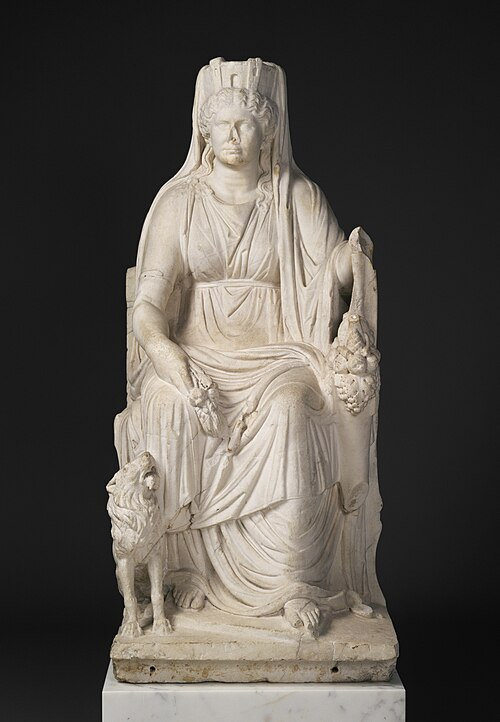

I sing of the divine and of an almond tree…is how this story might have begun, more than 2000 years ago when it was first created. Back in the Ancient World, when writing was in its infancy, stories were shared through songs and told at public gatherings.
The story I’m about to recount, due to the fluid nature of oral traditions, is an amalgamation of accounts. Some versions varied drastically, while some aspects of the tale remained the same throughout. However, the significance of this myth, and what it tells us about gender in the ancient world, remains the same throughout.
A divine birth
Much like most ancient myths it begins with a god. But this god isn’t the main character of the story, though he might think he was. Zeus to the Greeks, Jupiter to the Romans and Sabazios to the Phrygians (who first told this story). The king of the gods and lord of the skies.
As sky and earth are often connected, this tale begins with their mating. In some accounts this is a more spiritual event, in others the god ejaculates onto a rock. In either case, from this union comes one of the few intersex deities ever recorded in European history - Cybele.
Gender of the gods
In many later beliefs, Cybele is seen as a “mother goddess, suggesting they were perhaps more considered to be a woman. However, some accounts also record that they were born with both male and female genitals, making them intersex. Intersex is where a person’s biology relating to sex defining characteristics, which included chromosomes, genitalia and other physical markers, does not match the standard binary of male and female.
Unfortunately, in some versions of the myth, Cybele either chose or was forced to remove their male genitalia. However, from this sprung an almond tree that would prove incredibly influential later on.
Son of an almond
One day, a water spirit named Nana was walking along in the beautiful Phrygian sun when they came across the almond tree. Although spirits like this don’t feel human urges like hunger, she couldn’t help but try one of the almonds from the tree. Miraculously, she became pregnant and gave birth to a boy who she named Attis.
Nana, probably quite shocked by the whole event, left the child to be raised by a….goat. Not the wolf of Roman origin fame. I’m sure there was some significance to a goat raising the child, but for now we just accept it as part of the story. Regardless, Attis grew up to be a fairly sensible, functional and by all accounts handsome member of society.
Mother (goddess) F***er
Many years later, when Attis was all grown up, he finally met Cybele. This may have been a chance encounter or Cybele may have sought our the boy, having heard rumour of his good looks. Regardless, the pair fell deeply in love.
(Caveat: incest is fairly common in ancient mythology and often used as a moral warning against it).
Despite the pair’s best efforts, Attis’ adopted parents (not the goat, some humans ended up looking after him) sent him off to marry a princess in another part of Phrygia. Although Attis went along with this, Cybele, understandably, was pissed….
Wedding Crasher
Enraged, Cybele crashed the wedding and turned the entire congregation mad. This of course included the young Attis who, in some versions, castrated himself under a pine tree. In other versions, although still self-castrated, he turned into a pine tree when through Cybele’s guilt, she asked Zeus to make the young man immortal. Either way, Attis died and Cybele was left in mourning.
What does this myth tell us about gender in the ancient world?
If anything, this myth tells us something very important about human understanding of sex and gender in the ancient world. People living in Europe 2,000 years ago or more knew of intersex people. They of course didn’t use that term, but they knew people existed that did not conform to a binary of man and woman.
The gods, goddesses and non gendered deities of the ancient world were all representations of the human experience. Jealousy, adultery, anger, grief. The gods experience, and more importantly represent, all of these things. The Cybele story tells us they knew of the experience of intersex people. It is clear this tale was meant to make us feel sorry for Cybele, in all of its various forms. Every version ends in tragedy and Cybele loses the one thing they loved, due to the actions of “selfish mortals”. This perhaps suggest a level of acceptance for those who did not fit into a gender binary…?
In a future blog post, I will explore the lives of the Galli, the worshipers of Cybele and Attis. They spread across Europe, even existing in the far northern reaches of Britain. Their lives and their very existence show us that an acceptance of gender fluidity in humans, not just the gods, was possible in the Ancient World too.









